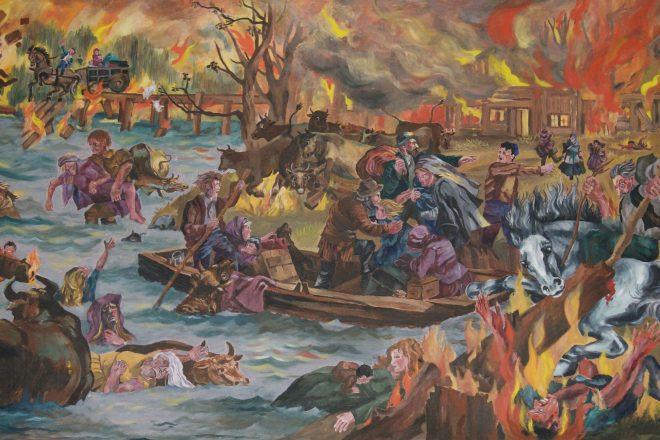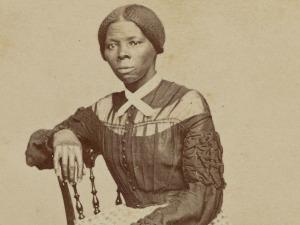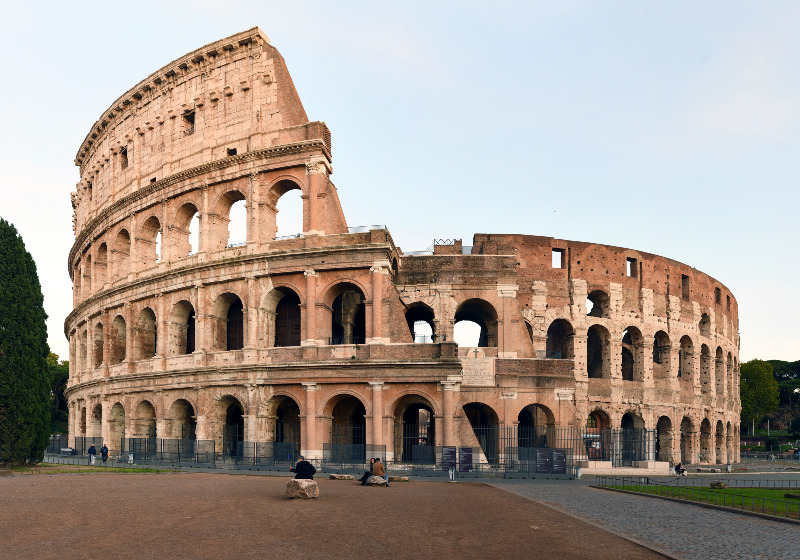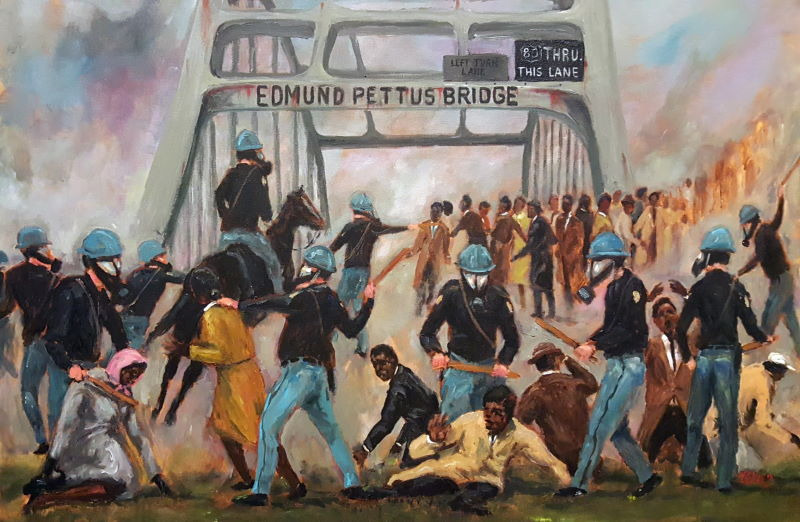|
|
|
|

by Jeremiah Warren, age 12
Mammoths and mastodons were similar animals and today sometimes get confused with each other. Both animals had trunks and a tusk, similar to elephants today.
Until about 5,000 years ago, small populations of woolly mammoths lived on islands in the Arctic Ocean. Both mammoths and mastodons went extinct between 11,000 to 12,000 years ago.
When scientists find a skeleton, they look at the head to tell these animals apart. Mastodons had bigger heads than mammoths, while mammoths had a knob made out of bone on the top of their skulls. They both had long tusks, but mammoth tusks grew at a curve, with some even crossing in front of each other. Additionally, mastodons had much shorter and straighter tusks than mammoths.
[read more]

by Jacob Dunn, age 12
The “Ice Bowl” was a Green Bay Packers football game that forever left its imprint on NFL history. It is also one of the most important sporting events in Wisconsin history.
On Sunday, December 31, 1967 the Packers and Dallas Cowboys were set to play in the league championship game for the second year in a row. However, cold weather conditions came out of nowhere overnight. Temperatures fell quickly and by game time it was -16 degrees with cold and brutal winds.
The Saturday before the game, two television networks came to broadcast the game to national audiences. The city of Green Bay was packed with people who labeled the city “Titletown USA” because the Packers had won the previous two titles. Now they were looking for their third straight championship.
[read more]

by Jeremiah Warren, age 11
The Peshtigo fire was a huge fire that destroyed the town of Peshtigo, Wisconsin on October 8, 1871. Although the fire is considered one of the deadliest fires in America history, somehow it is largely forgotten.
In the 1800s many fires were set on purpose. It was as a common practice to clear land for farming and for building railroads in 1871. On the day of the fire, a cold front moved west that brought very strong winds. This pushed the fire out of control, creating a big wildfire that headed towards the town of Peshtigo.
Another reason the Pestigo fire is forgotten is because a big in Chicago happened on the same day. The Great Chicago Fire also started October 8, 1871.
[read more]

by Hiba Al-Quraishi, age 14
Gladys West was a splendid mathematician. She was an African-American woman who accomplished many things during her career. Glady West is best known for developing a Global Positioning System, which today we call GPS.
“When you’re working every day, you’re not thinking ‘What impact is this going to have on the world?’ You’re thinking, I’ve got to get this right.” said Gladys West.
Gladys West was born on October 27, 1930 on a farm in southern Virginia. She spent the majority of her childhood working on her family’s farm. In addition to farm labor, her mother worked at a tobacco factory and her father worked for the railroads. West viewed her parents as an inspiration for what she became. Early on in her life, Gladys decided that she did not want to work in farms or factories like her parents. She wanted an education.
[read more]

by Ayelen Flores Ruiz, age 11
Harriet Tubman, a former slave, helped many African-American slaves reach freedom via the Underground Railroad. She also made significant contributions to the Union Army and was an important activist during the Civil War. She was known for being the first African American woman to assist the Union Army during the Civil War.
Harriet Tubman was born in Dorchester County in Maryland between 1820 and 1822. Tubman was born into slavery. She was one of nine siblings, born to Harriet Green and Benjamin Ross. When Harriet Tubman was young she got hit in the head for helping a man who was being beaten for trying to escape, causing her to have horrible headaches and narcolepsy.
Tubman escaped slavery by using the Underground Railroad. She then navigated people who were trying to escape to freedom by using the Underground Railroad. Harriet Tubman was never caught and never lost a passenger while assisting people to freedom. Because of her success in escaping many slaves, Tubman had a $40,000 bounty on her head.
[read more]

by Theodore B. Morrison, age 14
Anyone who lives in the northern Midwest has experienced his or her fair share of snowstorms. These snowstorms though, do not compare to the Armistice Day Blizzard, one of the most devastating natural disasters in Wisconsin’s history.
The name originates from the storm which occurred on Armistice Day, now known as Veterans Day, a day that celebrated the end of World War I and a new period of peace. However, this blizzard was anything but peaceful.
The Armistice Day Blizzard on November 11 and 12, 1940 caused a drastic drop in temperature that resulted in more than 150 deaths in Wisconsin. The blizzard formed when cold northern air combined with warm moisture from the Gulf Coast, which created a sudden drop in air pressure. The storm generated winds up to 80 MPH, creating 20-foot snowdrifts, laying down a foot of snow, and conditions similar to those of a hurricane.
[read more]

by Amalia Fung-Jenikins, age 12
The Colosseum is one of the most popular tourist attractions in Rome with millions of people visiting each year. Also known as the Flavian Amphitheater, it has a very rich history dating back to the early A.D. 70’s when it was built as a gift to the Roman people.
Following the opening, the Colosseum went through many changes. Ultimately, it reached almost four stories high with measurements of approximately 620 feet by 513 feet. In terms of the design, it had the capacity for 50,000 spectators and there were a total of eighty entrances: 76 for the attendants of the events, two for the event participants, and another two for emperors only. The emperors regularly attended the gladiatorial games held in the Colosseum. During the first opening, the emperor Titus held a 100-day celebration for the gladiatorial games. The emperor Commodus was especially famous for performing in the arena during the games. In addition to the games, the Colosseum also held dramas, reenactments and public executions.
Eventually the Roman people lost interest in the games. After a number of earthquakes, the condition of the Colosseum began to disintegrate around the fall of the Western Roman Empire in the fifth century A.D. With almost two-thirds of the structure destroyed by the 20th century, restoration of the building began in the 1990’s.
[read more]

by Sandy Flores, age 14
Michael Starr Hopkins is currently circulating a petition he created to rename the Edmund Pettus Bridge in Selma, Alabama. To date, over 500,000 have signed the petition.
The newly proposed namesake, John Lewis, was an American politician and civil-rights leader who served in the United States House of Representatives from Georgia. He recently passed away on July 17, 2020. He was known as one of the “big six” leaders who organized the 1963 march on Washington during which Martin Luther King delivered his famous “I Have a Dream” speech. Lewis fulfilled many key roles in the civil rights movement, which fought to end legalized racial segregation in the United States.
The Pettus bridge was the scene of the infamous “Bloody Sunday” march for Civil Rights. On that Sunday, March 7th, 1965, many brothers and sisters came together to march along the 54-mile highway from Selma, Alabama to the state capitol of Montgomery. Many people were almost beaten to death while others suffered severe injuries. John Lewis had his skull fractured by police during the first of three scheduled marches from Selma to Montgomery.
[read more]

by Jada Matson, age 13
Cleopatra VII ruled as co-regent of Egypt for almost three decades. She was the last in a dynasty of Macedonian rulers founded by Ptolemy, whose family ruled Egypt for 300 years. Cleopatra is best known for being the last pharaoh of Ancient Egypt.
Cleopatra was born in 69 BC to the Pharoah Ptolemy XII and an unknown mother. During her childhood, she was brought up in the palace of Alexandria in Egypt and received a Greek education, as her family was of Greek descent. But she knew quite a few different languages; some of them being, Egyptian, Ethiopian, Hebrew, and Arabic. Cleopatra's family can be traced back to the Macedonian house of the Ptolemies, who took the throne after the death of Alexander the Great.
When she was eighteen years old, Cleopatra's father passed away, leaving his throne to her and her youngest brother, Ptolemy XIII. Right away, Cleopatra and her ten-year-old brother were married and began to co-rule Egypt. Since Cleopatra was much older than her brother, she took control as the main ruler; but once Ptolemy XIII was older, he wanted more power. Soon, he kicked Cleopatra out of the palace and took over as Pharaoh.
[read more]
More Recent History Content
The “Ice Bowl” was a Green Bay Packers football game that forever left its imprint on NFL history. It is also one of the most important sporting events in Wisconsin history.
[read more...]
Have you ever heard of Belle Case La Follette? She was a woman who fought for the right to vote and was a strong leader for women's equality and peace.
[read more...]
Gladys West was a splendid mathematician. She was an African-American woman who accomplished many things during her career. Glady West is best known for developing a Global Positioning System, which today we call GPS.
[read more...]
The Peshtigo fire was a huge fire that destroyed the town of Peshtigo, Wisconsin on October 8, 1871. Although the fire is considered one of the deadliest fires in America history, somehow it is largely forgotten.
[read more...]
Anyone who lives in the northern Midwest has experienced his or her fair share of snowstorms. These snowstorms though, do not compare to the Armistice Day Blizzard, one of the most devastating natural disasters in Wisconsin’s history.
[read more...]
Harriet Tubman, a former slave, helped many African-American slaves reach freedom via the Underground Railroad. She also made significant contributions to the Union Army and was an important activist during the Civil War. She was known for being the first African American woman to assist the Union Army during the Civil War.
[read more...]
In 1943, protests coined the Zoot Suit Riots (named after the outfits worn by young Latinos and minority groups) took hold of Los Angeles in the wake of swelling racial tensions and prejudice.
[read more...]
The Titanic sank in 1912 and while many were left shocked, others were left questioning: did it actually sink?
[read more...]
The Colosseum is one of the most popular tourist attractions in Rome with millions of people visiting each year. Also known as the Flavian Amphitheater, it has a very rich history dating back to the early A.D. 70’s when it was built as a gift to the Roman people.
[read more...]
The Silk Road stretched across Europe and Asia, and traders carried goods back and forth along its routes. Silk was often bought from China to dress European royalty and any patrons who had enough money to afford it. Jades, other precious jewels, porcelain, tea, and spices also were exchanged from Asia. From Europe came horses, textiles, and manufactured goods.
[read more...]
The Olmec Civilization is an archeological culture in Southern Mexico that thrived between 1200-500 C.E. This means it is understood through artifacts left behind, especially huge head statues, rather than by written history.
[read more...]
Michael Starr Hopkins is currently circulating a petition he created to rename the Edmund Pettus Bridge in Selma, Alabama. To date, over 500,000 have signed the petition.
The newly proposed namesake, John Lewis, was an American politician and civil-rights leader who served in the United States House of Representatives from Georgia.
[read more...]
Have you ever wondered why periods and commas go inside quotation marks when using MLA style?
[read more...]
Cleopatra VII ruled as co-regent of Egypt for almost three decades. She was the last in a dynasty of Macedonian rulers founded by Ptolemy, whose family ruled Egypt for 300 years. Cleopatra is best known for being the last pharaoh of Ancient Egypt.
[read more...]
As you probably know, the tyrannosaurus was a large carnivorous dinosaur that lived in the Cretaceous period. This period ended approximately 65 million years ago. The tyrannosaurus is what comes to mind for many when they think of dinosaurs. It is easily one of the most well known, and iconic dinosaurs.
[read more...]
Mohandas Karamchand Gandhi was born on October 2nd, 1869, to Karamchand and Putlibai Gandhi. When Gandhi turned 18 he started studying in England to become a lawyer. After moving back to India in 1891, he was unable to find work, so in 1893, he moved to South Africa. During his time in South Africa, he began to develop the philosophy of non-violence. Gandhi used the act of Satyagraha or peaceful protest.It was there that Gandhi organized his first non-violent movement with the South African Indian community to oppose racist laws, putting his philosophy to use.
[read more...]
Have you ever asked yourself: why are barns in Wisconsin painted red? Contrary to the myth that farms were painted red so that cows could find their way home, it turns out that this strategy is non-factual because cattle are colorblind to the colors red and green. It'll surprise many to hear that barns weren't even originally red.
[read more...]
It is fairly common knowledge that a huge asteroid hit Earth over 65 million years ago, resulting in the extinction of all non-avian dinosaurs. The collision flung huge amounts of rock and dust into the atmosphere. This blocked out the sunlight from the Earth for years. The plants that used the Sun for energy died, causing the dinosaurs which depended on them as a food source to starve. Plus, the dust particles caused so much friction that they started fires. However, that's not the entire story: according to new research this asteroid also caused a huge tsunami which affected the entire globe.
[read more...]
Do you know who the first Black pilot was? Well if you don’t, it was Eugene J. Bullard. Bullard’s life was filled with many unexpected events such as from running away at 11, stowing away on a boat at 16, and even enlisting in a French army at 19, not even knowing French. This is his story.
[read more...]
The Edmund Fitzgerald was the largest ship that ever sank in the Great Lakes, and one of the most famous shipwrecks in the world. Many of the details about its sinking remain unknown.
[read more...]
Dred Scott v.Sandford, also known as “the Dred Scott decision”, is seen as one of the worst and most important decisions ever determined by the Supreme Court. The case started a remarkable argument over the future of slavery and its decision incited the Civil War.
[read more...]
What is Cinco de Mayo? Most people don’t know the answer to this question. Many view Cinco de Mayo as an independence day when, in truth, it is a celebration of the Battle of Puebla, a battle between the French and Mexicans.
[read more...]
Have you ever heard of the Iguanodon, one of the first dinosaurs ever discovered, that roamed the land during prehistoric times? Well, if you want to learn more about this great herbivore, read on.
[read more...]
Recently, a huge prehistoric Mayan city was uncovered using a revolutionary technology called LiDAR. This discovery may change the way that archeologists look at ancient Mayan civilization. LiDAR is a tool that can help archeologists map out areas and discover previously unnoticed ruins or structures; it helped a team of Mayan civilization experts uncover a huge Mayan city.
[read more...]
In AD 500, Teotihuacán was the largest and most sophisticated city in Mesoamerica. Today, it is a famous visitation site and remains one of the greatest wonders of the world.
[read more...]
On March 14, 2018, Stephen Hawking died from a disease which doctors thought would kill him 50 years earlier. He was a brilliant cosmologist who did groundbreaking work despite being wheelchair-bound and in later years, unable to speak.
[read more...]
Since the 1948 National Basketball Association season, the Celtics and Lakers have faced each other 359 times in regular season games and in the NBA Finals through the 2017 season. Many fans know this as the greatest rivalry in NBA history.
[read more...]
The majority of woolly mammoths went extinct 10,600 years ago when climate change caused their supply of drinking water to dry up. Scientists analyzed climate change and came to the conclusion that global warming likely led to the shallow waters responsible for the animal's demise.
[read more...]
In a seemingly vacant desert lies possible secrets regarding one of the most popular conspiracy theories the world has ever known.
[read more...]
Scientists have long pondered what disease could have been strong enough to cause the end of the Aztecs. A new study reveals that a lethal form of the bacteria salmonella could be the culprit of the Aztec’s demise.
[read more...]
Female scientists in the past, such as Rosalind Franklin, Mae C. Jemson, and Ada Lovelace, have worked to demolish the stereotype that science is a profession for a man. There are, however, even earlier females who jump-started pathways for women in science.
[read more...]
From singing funky, jazz-inspired tunes in the loud city of Las Vegas to lulling his three young children to sleep after a long night, Frank Sinatra has done it all. A loving father, Sinatra dedicated over 50 years of his life to music.
[read more...]
On Valentine's Day, 1929, seven men were shot by four gangsters in Chicago. This infamous incident caused a historical shock for the Chicago public. Commonly referred to as The St. Valentine's Day Massacre, it is one of the most well-known gang-affiliated crimes of the 20th century.
[read more...]
Vincent Van Gogh was a very misunderstood Dutch artist who created many priceless works. Though he could do anything from sketch to paint, he mostly painted. One of his most famous paintings is Starry Night, which he created in 1889.
[read more...]
Sexism and even theft sometimes played roles in the crediting of various scientific discoveries throughout history. Rosalind Franklin, a brilliant woman who lived during the 1900’s, and her work with DNA is a perfect example of this.
[read more...]
Do you know who Betty Shabazz was? She was the wife of Malcolm X. She was an educated woman who lived a hard life.
[read more...]
Who were the Mayans? The Mayan empire is one of the most well-known civilizations in history. Located in the highlands and lowlands of Mesoamerica, Mayan civilizations had unique plazas, temples, and pyramids. The Mayan empire lasted from 300 BC- 1519 AD. The Mayans made an important impact on history.
[read more...]
The Great Depression, was worldwide crisis that spanned 1928 to 1933, caused wide-spread unemployment, bankruptcy, business failure, and price inflation. This tragedy left millions of previously-employed Americans without jobs and in poverty. And in Germany, the 20-million-strong workforce dropped to 11 million.
[read more...]
The Freedom Riders movement began May 12, 1961. The Freedom Riders were a group of activists, originally seven black, six white, who protested segregation in the South for seven months. Their goal was to integrate transportation and facilities in the southern states. Their courageous actions during this time sparked massive controversy. They were brutally beaten, arrested, and faced racial oppression. The Freedom Riders are a symbol of justice, civil rights, and activism.
[read more...]
Early in her life, Georgia Mills Jessup became an artist along with 29 other family members with jobs in the arts. She was a well accomplished painter, ceramicist, muralist, collagist, and sculptor. She started creating art at a very young age and continued for the entirety of her life.
[read more...]
British writer and feminist Virginia Woolf is one of the most influential writers of the early 20th century. Her writing challenged the values recognized during the Victorian era and made progress for women. Although her writing was unpopular during her lifetime, she was an inspiration for women in questioning social normalities for future authors.
[read more...]
Thirty-two-year-old Ibtihaj Muhammad is the first-ever Muslim woman to wear a hijab while representing the United States of America at an Olympic Games. She participated in the 2016 Summer Olympics.
[read more...]
Famous icon Beyoncé Knowles has lived several lives. She is a solo artist, a former member of Destiny's Child, an actress, a wife, a mother, and a business person.
[read more...]
There's only one place that can be called the epicenter of our democracy; that place is Washington D.C, also known as the District of Columbia. This is where America’s federal government operates.
[read more...]
Kevin Durant is one of the highest scoring professional players in the National Basketball Association (NBA).
[read more...]
The early American West was expanded and built up by settlers and pioneers. In 1776, the United States became independent, which attracted people from Europe. These people, who then moved to the American frontier, were called “settlers.” Most settlers made their homes in the eastern half of what is now the U.S. It wasn't until 1803, after the US. purchased territory from France, that many settlers traveled West.
[read more...]
The 1980 Olympic semifinal hockey match between the Soviet Union and the United States will always be remembered as one of the greatest games of all time. In fact, this game is till referred to as the “Miracle On Ice.”
[read more...]
Astrology
is the study of how the positions of planets and constellations at the time of a person's birth may affect their lives on Earth. The practice of astrology dates back to the second millennium B.C.E. Before widespread use of the scientific method, astrology was considered an academic discipline. Now, it is no longer considered a science but it still may be a useful tool for understanding humanity.
[read more...]
Poland had been defending its freedom from foreign aggressors for hundreds of years; it is a country with a long and rich history.
[read more...]
Many students know about the European front during World War II, but fewer may have learned in-depth about the just-as-relevant Pacific/Asian front.
[read more...]
Kameron “Kam” Chancellor began his football career as a leading player at Maury High School. Today, the six-foot star is a Super Bowl Champion and safety for the Seattle Seahawks.
[read more...]
Kobe Bryant was born in Philadelphia, Pennsylvania on August 23, 1978. Bryant is the son of past NBA player Joe “Jellybean” Bryant. The younger Bryant spent his early years in Italy, but returned to the U.S. to attend Lower Merion High School in Pennsylvania to play basketball. Here, he led his high school team to four consecutive state championships. This was only the beginning of Bryant's basketball success!
[read more...]
Did you know that 90 percent of the people who live in Thailand are Buddhist and about three million people there are Muslims? The lifestyle in Thailand is probably very different than yours.
[read more...]
Beginning in 1870 and ending in 1910, large groups of African Americans moved from the southern United States to the North. This mass movement was called the ''Great Migration.''
[read more...]
The fact that giraffes have long necks is commonly known. But what might surprise some people is that it wasn't always this way, and there are many theories why.
[read more...]
Steven Paul Jobs, co-founder of Apple Computers, was born to two University of Wisconsin graduate students. However, it was his adoptive parents who shaped him into the brilliant man he became.
[read more...]
The Colosseum is an ancient stadium in the city of Rome. It was perhaps ingeniously designed as both a place of entertainment and an arena of death.
[read more...]
Fossils are remnants of organisms that died millions of years ago. They can provide information about organisms that we may not otherwise know.
[read more...]
You may have heard of her before, or maybe you have even seen her wailing her terrifying cries. She is the Banshee, fairy of death and witchcraft, the star of many Irish legends.
[read more...]
A few billion years ago, in a galaxy not so far, far away, before humans even existed, the universe was created. Scientists posit that the universe was formed about 13 billion years ago. Imagine a black, empty void followed by a flaming ball of dust and debris forming our universe; this theory is called the “Big Bang.”
[read more...]
Ancient people had many incorrect ideas about the Earth. To this day, researchers are working to uncover these ideas and the truths that lie behind them.
[read more...]
Michelle Obama—public servant, mom, and First Lady of the United States— is a great role model to young boys and girls today.
[read more...]
George Washington Carver was born into slavery in 1864. He and his mother, Mary, were owned by Moses and Susan Carver.
Carver was orphaned as a child when his mother was captured by slave raiders. After slavery was abolished, Moses and Susan Carver took in Carver, and regarded him as their own son. The Carvers taught him how to read and write. A good student, Carver especially enjoyed learning about plants and animals.
[read more...]
The Eiffel is one of the most fascinating and famous towers in the world. French engineer Gustave Eiffel and his company designed the Parisian tower, the construction of which began in 1887. The tower was ultimately completed by 1889.
[read more...]
A long time ago, before even newspapers existed, there lived a group of people called the Ancient Greeks. They shared news in the form of myths; which were often passed on through word-of-mouth. These myths represented a set of beliefs and are now collectively called Greek Mythology. One of my personal favorite Greet myths is “Lost At Sea”.
[read more...]
While many remember Leonardo Da Vinci as a great artist, he was also a great scientist.
He was born in the little Tuscan town of Vinci on April 15, 1452. His parents quickly separated after his birth, his father re-marrying a local heiress, and his mother, a local cow-herder. Leonardo was left in the custody of his father and his stepmother. The two didn’t have much time for Leonardo; his grandfather looked after him.
[read more...]
Ancient Egypt was a monumental civilization that is still admired to this day. This nation's history reveals a fascinating progression from small settlement to country.
People first settled in Egypt because of the Nile River. The Nile provided many things necessary for a settlement, such as food sources from the fish and the animals that came to drink here; water from the river itself; fertile silt for farming; and building materials from vegetation growing in its nearby areas. People also settled in Egypt because of its surroundings: the sand dunes, hot weather, and rough climate made it difficult to invade Egypt, therefore making it a safe place to live.
[read more...]
A recent study conducted by an international team of scientists reported that agriculture's arrival in Europe 8,500 years ago altered human DNA. Specifically, Earth's populace saw changes to its height, digestion, immune system, and skin color. The study, the first of its kind, considered differences between genetics from living Europeans and their ancestors. This allowed researchers to see genetic changes that occurred over thousands of years.
[read more...]
On October 23, 1940, Edison Arantes do Nacimiento was born in Tres Coracones, Brazil. Though he eventually became the most famous soccer player in the world, he came from a very poor family.
[read more...]
The recent of a finding of a 5,300 year-old stomach has yielded a revealing discovery. The stomach, extracted from the famous ice mummy Otzi, contained a strain of infectious bacteria no longer found in modern humans.
[read more...]
As a kid, have you ever heard an older sibling or friend say “I call shotgun” before a car ride and wondered what that really meant? The answer may lie in old western legend.
[read more...]
Egyptian mummies are the stuff of legends, cryptic video games and adventure films. But why did the Egyptians make mummies in first place?
[read more...]
Teotihuacan, an Aztec name meaning ''place of gods,'' was the biggest city in Mesoamerica, South America. It covered an area of more than eight square miles. Big streets, religious buildings, and private houses were part of what made this civilization so sophisticated.
[read more...]
The Arctic is not a place many humans would call home, however, but it's just that for some birds. Though most birds live in warm climates and migrate elsewhere when it gets cold, Arctic birds stick it out through each freezing winter.
Arctic birds live in the treeless tundra.
[read more...]
Lenses are used to see and visually document the world around us.
The two main types of lenses are convex and concave. They are used in many different tools, reflecting and bending light to produce an image. Lenses work by moving light in different directions using refraction, forming a smaller or larger image. A beam of light may diverge or converge depending on the shape of the lens.
[read more...]
America owes its riches to African slaves. The institution of slavery started during the 17th and 18th centuries in the United States. The country had plenty of natural resources, but it did not have enough labor to farm the land. To the rich white plantation owners, African slaves seemed to be a perfect solution.
[read more...]
Marianne Winkler was walking on a German beach with her husband when she saw an object that had washed up on the shore. She investigated further to find the object was a message in a bottle.
The bottle was sealed shut, so Winkler and her husband decided to break it to get the message
[read more...]
The longest river in the world, the Nile flows in many countries. Every year, the Nile rises from July to October despite the fact that it hardly rains in Egypt. This is known as “the riddle of the Nile river.”
[read more...]
Sir Isaac Newton was one of the greatest scientists of all time. He is mostly known for his early theories of gravity, but also for his discovery of the three laws of motion.
[read more...]
Mining involves digging into the earth to find useful, valuable substances. The second of humankind’s earliest endeavors (after agriculture), the practice of mining for coal, gas, salt, mineral ores, gemstones, and building materials has existed for centuries.
[read more...]
Louis XIV was one of the most powerful rulers in the history of France. By the end of his reign, however, the country was left in financial turmoil.
[read more...]
Muhammad Ali, born Cassius Clay, is considered one of the best boxers in history because of his accomplishments, both inside and outside the ring.
[read more...]
In the year 1900, pieces of an ancient device that would come to be known as the Antikythera mechanism were discovered under the sea by sponge divers and taken to the National Archaeological Museum in Athens, Greece.
[read more...]
With a career spanning nearly 50 years, Satchel Paige was one of the greatest pitchers of all time—not only in the Negro League but also in the history of baseball.
[read more...]
Trains carry passengers and freight all over the world. They have evolved from crude steam powered engines to sleek diesel and electric locomotives.
[read more...]
Music is a simple name for a complex idea. The word “music” comes from the Greek muses: nine goddesses of literature, the arts, and sciences. They were said to inspire poets and artists alike. The same can be said of music today and throughout history.
[read more...]
The very first horses originated in North America almost two million years ago. However, the species almost disappeared from the New World around 10,000 B.C.E. Researches believe that people who migrated from Eurasia to North America around this time and hunted and captured horses are to blame for their near-extinction.
[read more...]
The 1300s in Europe were dark—some might even say black. It was the time of the Black Death.
[read more...]
Mexico went through a lot of complications in order to become a complete nation.
[read more...]
The Triassic world emerged after the end-Permian mass extinction which almost wiped out life on earth. During the Triassic era, the world's reptiles first appeared.
[read more...]
The 3,000 foot tall “Nose” is located on Yosemite National Park's granite massive structure, “El Capitan.” Many people had tried to climb it, but nobody succeeded until athlete Lynn Hill. Hill was the first climber to conquer the Nose.
[read more...]
The longest period of human history, the Stone Age, covered such an extensive time that it is often divided into stages. Researchers determines these stages according to the type of tools mankind created and used at certain times.
[read more...]
Keeping clean has been important for thousands of years. The Ancient Romans had very unique ways of washing and bathing.
[read more...]
Before 1920, women in the United States were not able to vote, though male citizens had long been granted this right. This inequality sparked protest. In 1792, British author Mary Wollstonecraft advocated for womens’ right to vote in her book, A Vindication of the Rights of Women. Others like the Chartists group in Britain had begun campaigning for voting rights during the 1830s too, but women were not included in this.
[read more...]
Founded around 2300 B.C.E., in Mesopotamia, one of the strongest city-states in history flourished for 2000 years. Babylon was a beautiful ancient civilization located near the Euphrates River and modern-day Iraq. The discoveries made in Babylon laid the foundation for modern mathematics and science.
[read more...]
Almost 150 years ago a group of 250 men built the 1,000-foot-tall Eiffel Tower in only 26 months. Gustave Eiffel, French engineer, submitted his plans for what would be the tallest structure in the world at that time, along with 100 other architects in a contest. In 1886 his company was selected to build his structure in time for the 1889 Paris Exposition. Eiffel was not only known for building sturdy railroad bridges but also had a reputation for solving technically challenging problems.
[read more...]
Ancient Greece is well known for its myths and legends of epic heroes and powerful gods and goddesses. During this time, it was also important to become famous in order to be remembered after death.
[read more...]
Throughout history, researchers have discovered information about our ancient ancestors. The finding of one baby homo neanderthalensis fossil sparked many of these findings.
[read more...]
Many foods that we eat today were first grown in the Fertile Crescent around about 8,000 B.C.E when the practice of farming began.
[read more...]
In the Black Hills of South Dakota, there is a curious looking mountain.
[read more...]
The city of Petra is located in the Middle Eastern country of Jordan. Before the first temples and tombs were built in 300 B.C. E. thick layers of rock surrounded the area. The city is the namesake of this rocky terrain, petra meaning rock.
[read more...]
Imagine standing at the foot of a huge Chichén Itzá pyramid in Mexico, as I did recently during a family trip. I took in the enormity of the pyramid and its vast desert-like surroundings. I felt speechless at the thought that many years ago the place where I was standing was the heart of the Mayan civilization. The Mayan civilization flourished for more than seven hundred years.
[read more...]
The history of horses is a long and interesting story that started around 5000 B.C.E. Around 4500 B.C.E. farming communities sprung up starting in the southwest part of central Asia and the edges of Europe where conditions permitted. Early farmers spent their days growing crops and herding livestock. These early farmers were some of the first to domesticate horses.
[read more...]
The early 20th century was a time in U.S. history when racism and discrimination was at its height. Because of the color of their skin, some people were treated like animals. Despite this culture, groups like the Tuskegee Airmen, worked tirelessly to break down barriers for African Americans.
[read more...]
Wisconsin is often referred to as the “Badger State.” Most people think Wisconsin got its nickname because there are lots of badgers in the state, but this is not true.
[read more...]
Amelia Earhart was the first woman to fly across the Atlantic Ocean alone.
[read more...]
Many people call him the “Babe Ruth of the Negro Leagues.” His name was Joshua Gibson, and he was one of the most famous Negro League baseball players ever. Throughout his life, he got better and better at baseball. He started as a pitcher, a catcher, and a hitter.
[read more...]
Remains from one of the world’s oldest cities date back to the year 6250 BC. These remains came from Catal Huyuk. During this time, the people in this city got into their houses through a hole in the roof instead of using a door.
[read more...]
|
|
|
|
|
|
|

